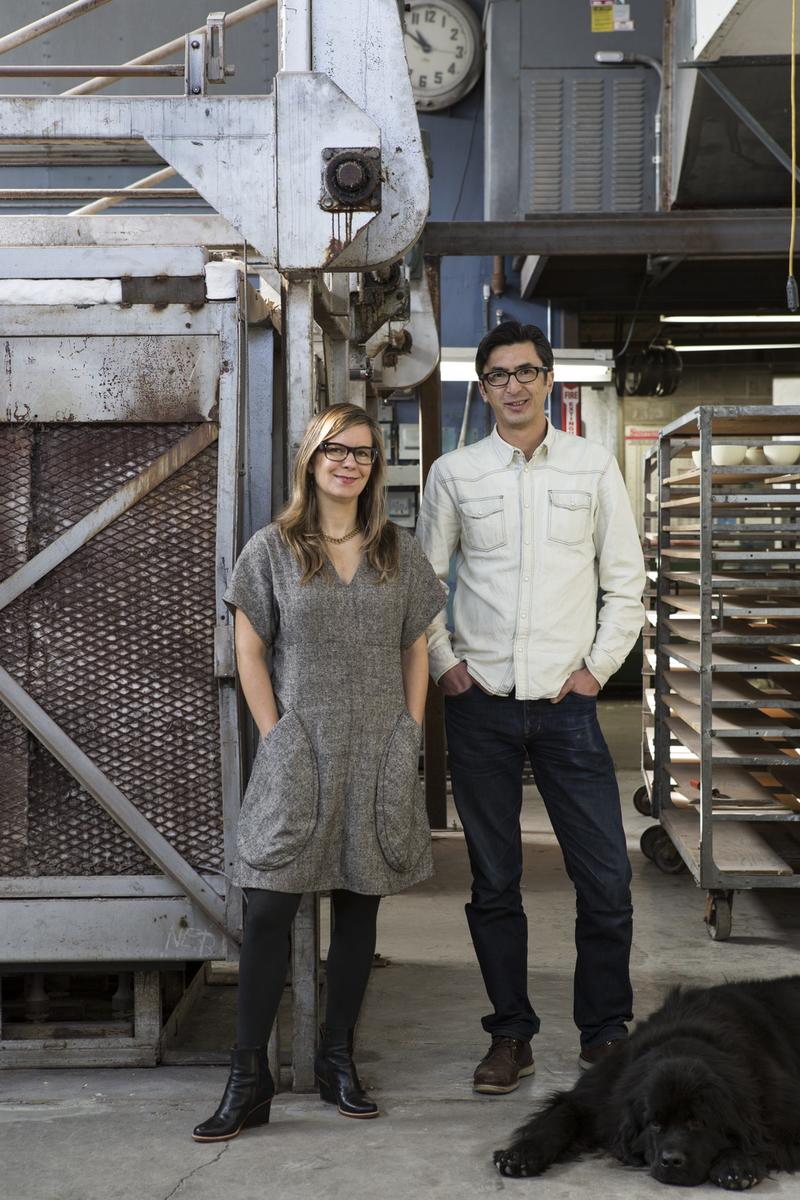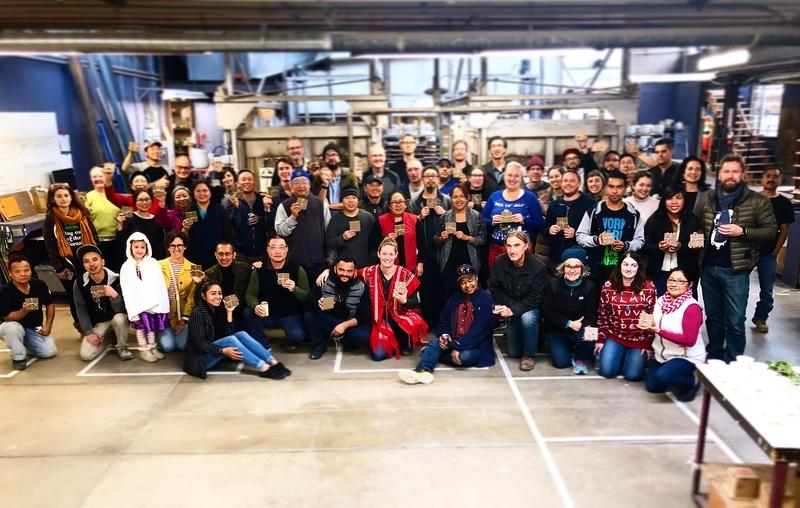In 2015, Robin Petravic and Catherine Bailey, co-owners of iconic California ceramics brand Heath, were looking ahead to the 15th anniversary of their tenure. Over the last decade, the couple had transformed the company from a struggling legacy brand into a thriving enterprise that recently celebrated its 70th anniversary. Moreover, they had done it with a tightly held set of values, keeping all design and production in-house, staying local, and favoring sustainability over growth. There was plenty to celebrate, but instead of breaking out the Champagne, the pair turned their attention to a subject many business owners choose to put off as long as possible: succession planning.
“It’s still a ways off,” Petravic tells Business of Home, “but at some point there’s going to be succession at Heath. And unlike a lot of businesses, we didn’t want the company to be sold off to the highest bidder, we exit stage left, and that’s it. We wanted to ensure continuity of the values we’ve built here.”
At the same time, Petravic and Bailey were hoping to pay back a group of early investors. The traditional route to solve both problems would be to sell a piece—or all—of the company, but for Petravic, the idea was a nonstarter. “I read an interview with the founder of Clif Bar, Gary Erickson, that really resonated with me,” says Petravic. “He said, ‘You couldn’t give me enough needles to poke in my eyes rather than go public.’ I totally get that. You may go into [having investors] thinking it’s benign, but it starts to seep into what you’re doing.”

Petravic and Bailey began looking at other options, and it wasn’t long before they hit on a solution that felt true to their philosophy: Heath would sell, but not to an outside investor. Instead, they would split the company with their own employees in a financial maneuver called an ESOP.
ESOPs, or employee stock ownership plans, have their roots in the industrialization of the American economy. In the 1800s, companies like Proctor & Gamble and Sears & Roebuck began setting aside small shares of stock for longtime employees as a kind of proto-401K plan. The modern history of employee ownership begins in 1974, when Congress passed the Employee Retirement Income Security Act, conferring significant tax benefits on the creation of an ESOP. Suddenly, giving employees the keys to the kingdom was good business.
There’s a faint aura of utopian thinking that permeates the ESOP community. Indeed, many companies that undergo the process are driven by a CEO’s sense of egalitarianism, or a belief that employee ownership is the ideal form of capitalism. However, the majority of ESOPs are motivated by something else entirely: a desire to sell.
“Historically, ESOPs have been driven by business owners who want to retire,” Michael Pasahow, senior corporate counsel at Menke, the financial services company that oversaw the Heath ESOP, tells BOH. “You’re too small to do an IPO, your managers don’t have the cash to buy you out, and you don’t want to sell to a competitor.” Instead, owners create a trust that takes possession of shares that are then divided among employees. When the owners leave, they sell their stake to the trust, taking a payout. There are a variety of ways to structure the deal, but the primary motivator is typically financial.
“From the start, with Heath, it wasn’t a typical situation,” says Pasahow. “The first thing they asked was, ‘How is this a benefit for our employees?’ In our business, that’s normally the second or third question. Heath was different. They wanted to make it sustainable.”
Heath is different. The company was founded in the Bay Area in 1948 as a small pottery studio by married couple Edith and Brian Heath (she was the potter, he was the engineer and businessman). It quickly found an audience and grew exponentially in the following years, expanding into tile in the 1970s. Over time, the name Heath became synonymous with a kind of American craft ideal: simplicity of design wedded to quality workmanship. In the 1990s, the company entered a difficult period, and had shrunk to only 24 employees by the time Petravic and Bailey cobbled together the finances to buy it in 2003.
 Growth isn’t always good.
Growth isn’t always good.—Robin Petravic
Under their stewardship, the company has flourished, opening a tile factory in San Francisco, a showroom in Los Angeles, growing annual revenue to $30 million and expanding to more than 200 employees. Petravic, however, would balk at using raw numbers to describe Heath’s success. “Growth isn’t always good,” he says. “What’s a good decision in business is often contrary to what’s a good decision at Heath.”
The couple has turned down several investors over the years and firmly resisted pressure to move any part of Heath’s business offshore—or even out of state. Petravic and Bailey give all new employees a “Good Guide,” a company charter that elucidates the “do it local, and do it right” values that underpin their business. “Sometimes in meetings, when we’re talking about a decision, someone will say, ‘That wouldn’t feel very Heath,’” says Petravic. “That always feels good.” That kind of thinking, however, isn’t so easily applied to complicated financial transactions. How to make an ESOP feel ‘very Heath’?
ESOPs are often conducted at the C-Suite level, and employees are notified after the deal is a fait accompli. In Heath’s case, Petravic and Bailey told their staff at the beginning of the process. This allowed employees time to acclimate to their new roles as owners. It also allowed the couple the freedom of transparency. In order to fund the ESOP trust, they were setting aside roughly $500,000 of excess profit per year for three years, and openness allowed them to “explain to [our employees] why that money isn’t going to new equipment or cash surplus.”
The decision to “pre-fund” the ESOP also meant that Heath had cash on hand to create the trust, rather than financing it, making for a more stable future. In the final 2018 transaction, the staff received their slice of the company at no cost—the shares were divided on the basis of salary and seniority. Down the line, employees can choose to sell their share back to the trust; the arrangement (which is typical of an ESOP) resembles a traditional 401K, except there’s only one stock, and the employee doesn’t pay for the shares—the company does.
Even the pace of the Heath ESOP was structured to avoid disruptive change. “Often, the current owner wants to transition immediately and transfer 100 percent of the business to employees right away,” said Pasahow. “Heath wanted to go slow.” Petravic and Bailey transferred a minority stake of the business into trust, which will allow them to change the balance of ownership gradually over the years.
“ESOPs are a very flexible financial tool,” says Trevor Gilmore, CFO of Menke. “Some people use them as a pure employee-incentive plan, some use them as their exit strategy. Some do it all up front, others transfer ownership slowly so it’s not a fire sale when they want to retire.” Flexibility is one benefit. Performance is another. According to a 2000 Rutgers University study, companies that enact an ESOP enjoy, on average, a 2.4 percent growth in sales and employment. Studies that focus on employee satisfaction are equally rosy, confirming the unsurprising fact that people tend to work harder when they feel a sense of ownership in the result.
 We were always fairly transparent with accounting, but we can be even more so now that everyone is a partner.
We were always fairly transparent with accounting, but we can be even more so now that everyone is a partner.—Jim Susman
Still, ESOPs aren’t for everyone. “It’s generally not practical for companies with fewer than 15 or 20 full-time employees,” Corey Rosen, founder of the National Center for Employee Ownership, an ESOP advocacy group, tells BOH. “Also, it’s important to be profitable. Even if the company generates a lot of revenue, if they’re not profitable, it’s not a good idea.” Culture also plays a role; Rosen says that companies with strict top-down hierarchies are usually not a great fit for ESOPs. Finally, there’s the cost associated with creating a trust and filing legal documents, which can range from $25,000 to $300,000 for a more complex agreement. (Gilmore and Rosen both say that tax incentives can offset the initial cost of an ESOP over time.)
These roadblocks help explain why most residential interior design firms don’t consider ESOPs; most are too small or don’t have the necessary cash on hand. However, many larger hybrid architecture and design firms have had success with the arrangement.
“Most architects like to die at their desk,” Jim Susman, a principal at STG Design, an architecture/design firm in Austin, Texas, tells BOH. “There were so many of us from the baby boomer generation who put off thinking about succession long after we should have. When we started looking at our options, we saw an ESOP as a way to maintain autonomy and preserve our culture.” Susman’s firm transferred complete ownership to its 100 workers, a process that took roughly a year. He says his employees reacted positively to the news, and that the arrangement has given his office a greater sense of esprit de corps. “We were always fairly transparent with accounting, but we can be even more so now that everyone is a partner.”

It’s still early for Heath, and though Petravic is confident the ESOP is true to the values that drive the company, he’s not without concern. “Our primary goal is not to increase profit or grow,” he tells BOH. “With an ESOP, there’s an incentive to grow. I’m worried about that contradiction.” Time will tell. For now, he’s pleased with the way employees—ahem—owners have reacted.
“When we made the final announcement that the deal was done, it was at our Christmas party. Sometimes it’s difficult to take a photo with everyone in it, but this time it wasn’t hard. People who normally would try to disappear into the back row were in the front row, as owners.”
Homepage photo courtesy of Heath Ceramics




























